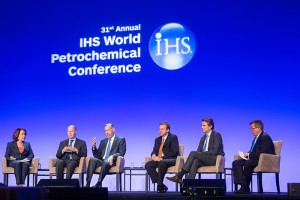The “lower-for-longer” oil price conundrum is delaying, but not cancelling, projects that were supposed to break ground in the 2015/2016 period. One notable example is the $2 billion steam cracker project for producing 2.2 million pounds of ethylene per year at Total’s integrated refinery/petrochemical complex in Port Arthur, Texas, one of Total’s six major integrated refinery/petrochemical platforms worldwide. Total announced last fall that it had contracted with CB&I for the FEED phase on a second steam cracking unit at Port Arthur, with project completion in 2019. The Port Arthur refinery is owned by Total and the petrochemical plant is operated by a joint venture between BASF and Total, with BASF owning the majority 60% stake.
Rising construction costs and market “flip-flops” are affecting project timing, as corporate planners try to deal with market volatility, as will be discussed in more detail at the RefComm® Galveston 2016 refining conference (www.refiningcommunity.com/refcomm-galveston-2016). For example, in 2013, BASF and Total revamped the existing Port Arthur steam cracker to primarily process the plentiful supplies of shale based ethane, propane and butane, instead of refinery naphtha. That decision was made when naphtha was considerably more expensive than ethane. However, refinery naphtha, being directly linked to declining crude prices, has again become competitive with natural gas based feeds (particularly ethane) for steam cracking. In fact, at the March 15 Argus DeWitt Petrochemical Summit in Houston, Andy Nicholson, Vice President Aromatics EMEI, Argus DeWitt noted that up until early 2014, refinery naphtha was seven times (7X) the cost of ethane (for producing ethylene). Now it is only 2X the cost of ethane, and this goes without saying that naphtha based steam cracking produces significantly higher volumes of valuable byproducts (e.g., propylene) thane ethane cracking. So, it may be “back to the drawing board” insofar as designing a flexible steam cracker capable of processing a variety of market favorable feeds, including naphtha, ethane/propane/butane, gas oil and others (e.g., refinery off-gas).
More detailed information on the cracker design may be released soon, but just last week, while speaking at the March 15-17 IHS 31st World Petrochemical Conference in Houston, Daniel McCarthy, CB&I Technology president, said, “I see a variety of projects under development by CB&I, particularly the Total cracker currently in the front end engineering and design (FEED) stage and general overall growth in the olefins market.”
McCarthy added that, “We are working on a number of projects in the LNG, petrochemical and olefins industry. In North America, we have continued development of gas fields for supply of LNG, which dwarfs the demand that could ever be generated for the petrochemicals market.” McCarthy also added that some other areas in CB&I’s backlog of projects revolve around solid alkylation acid catalyst technology, while other projects are related to reducing emissions, reducing greenhouse gas and solid waste, noting that these are projects falling under the category of sustainability initiatives.








Leave a Reply
You must be logged in to post a comment.